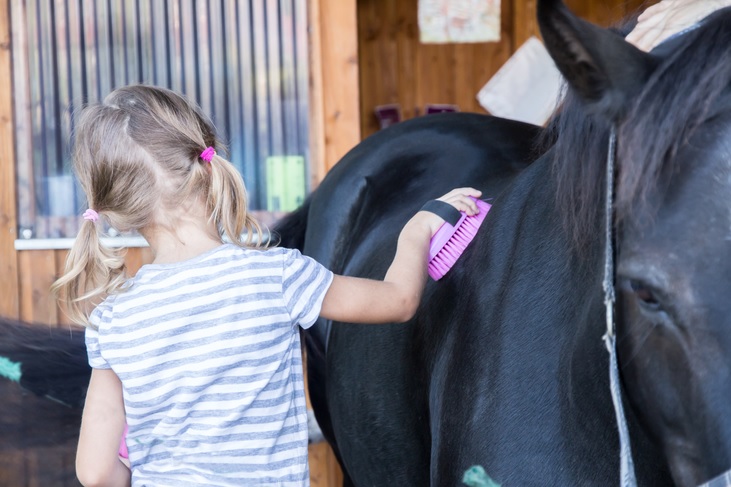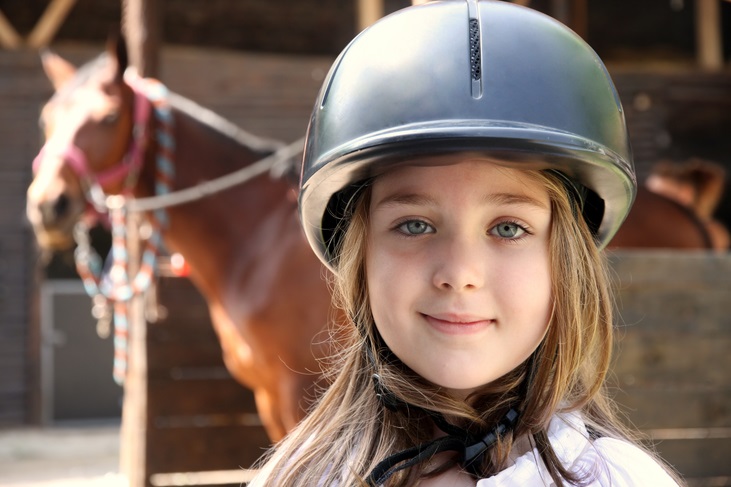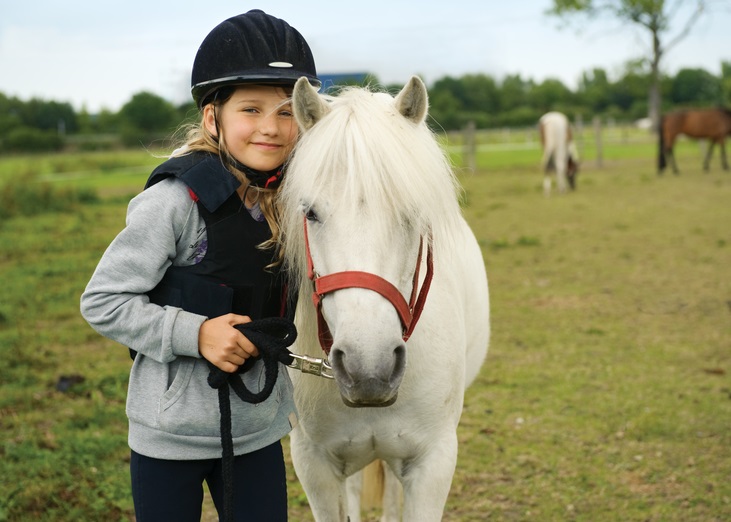Posted: 5th March 2020 | Back to news feed

Let’s imagine a scenario in which a child visits your stables for a riding lesson with visible burn marks and bruises that don’t look accidental. You notice the child, who has never been to your stables before, is unusually quiet throughout the riding lesson.
However, their parent seems happy, friendly, and chatty, and without you needing to ask, they tell you that the child is just shy and that they got their bruises from falling off a friend’s horse last week. The child rolls their eyes and acts annoyed when the parent tells you this, but you don’t ask questions because you assume they’re just embarrassed.
At the end of the lesson, the parent seems very short-tempered with the child for taking too long in the toilet. While they are getting into the car, you notice the parent raising their hand at the child in a threatening way, though you do not see them hit the child.

So, using your knowledge of equestrian safeguarding, could you pinpoint what’s wrong in this scenario?
In this scenario, a number of things are very wrong.
First of all, you would be right to suspect abuse if a child has visible injuries that don’t match the reason they, or a parent or carer, gives for how they got them. For example, falling off a friend’s horse might produce some bruising, but it does not explain the burn marks.
Additionally, the child’s reserved behaviour might be another indicator that something isn’t quite right, though it is true that some children are naturally more shy than others.
However, something that definitely should be reported is the adult’s short temper at the end of the lesson. Keeping in mind the parent was happy and friendly when speaking to you, this change in attitude is very unusual, especially as there doesn’t seem to be any real cause for such a violent response. Taking too long in the toilet is not a reason to raise your hand at a child and threaten to hit them.
It should also be noted that this child is new to the stables, so you do not know their family’s personal history or if they have been involved in any previous safeguarding incidents.
How would you respond to such an incident?
Keeping the children who visit our stables safe is a priority for most of us equestrians. It’s the reason we take safeguarding training and do our best to keep up to date with all the current guidance and processes surrounding child protection.
All of the above signs that something isn’t quite right should have been enough for you to know that a safeguarding report needs to be made in this scenario. Your equestrian safeguarding course should teach you how to notice the signs of abuse, including the signs that are more subtle, so that you can respond appropriately to incidents like this if and when they happen to you.
Remember, no suspicion is too small when it comes to safeguarding. Even the tiniest pieces of evidence can fit together to build the bigger picture that might help the authorities to save a child from an abusive or life-threatening situation. We simply don’t know what goes on behind closed doors and should always assume the worst when we notice something isn’t quite right.

The correct response
In this scenario, the correct response would be for you to contact your Safeguarding Officer or your manager if you do not know who is responsible for safeguarding at your stables. You should write a report of exactly what you witnessed, not leaving out any details, and including the time, date, and location of the incident. This information should be kept confidential and stored safely.
In many cases, the person responsible for safeguarding in your stables will then decide if a referral needs to be made. If so, they will need to contact the local authority or social services and tell them exactly what has happened, using your report as evidence.
You should always avoid confrontation with the people in question, though if you can ask further questions about a child’s injuries or behaviour, try to get as much information as possible without upsetting anyone involved.
If you suspect a child is at immediate risk of harm, or in an emergency, your very first response to the incident should always be to dial 999 for the emergency services.

Learn more about how to handle an equestrian safeguarding incident
The Child Protection Company offers 3 different online equestrian safeguarding courses, all of which are available 24/7 and come with verifiable certificates available to download immediately on successful completion. These courses take between 1 to 2 hours to complete entirely online, and they have been developed in association with the British Equestrian Federation to give you the most relevant safeguarding training for your role.
For more information about the courses, or to start training immediately, please visit the Child Protection Company website. Alternatively, you can give their friendly customer support team a call on 01327 552030 or email them at help@childprotectioncompany.com.
The Equestrian Index newsfeed is compiled from articles submitted by advertising members and expresses the opinions of those members. Watsons Directories Ltd shall not be held liable for any inaccuracies or mis-statements therein.